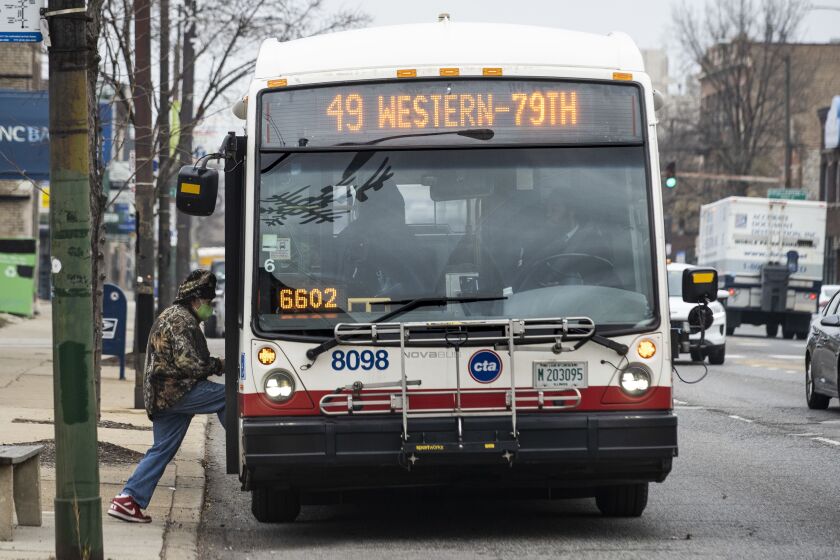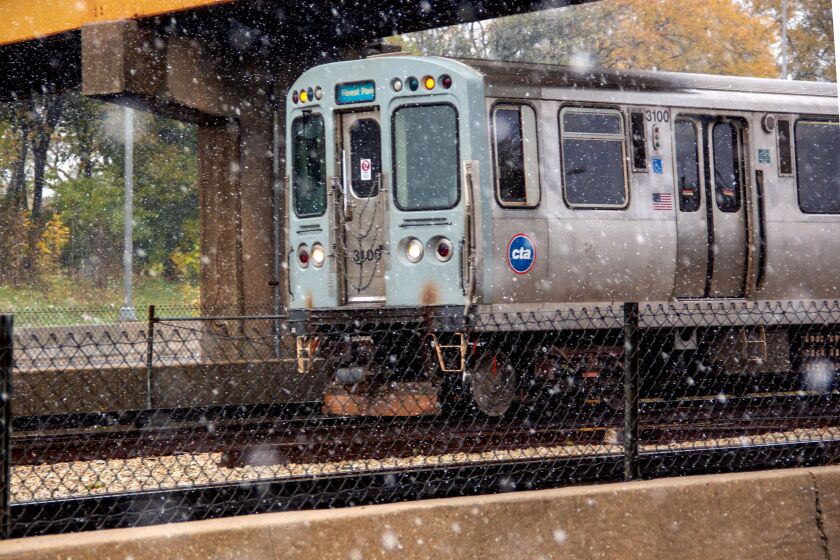Two of the CTA’s busiest bus routes — the No. 79 that runs along 79th Street and the No. 49 on Western Avenue — have recorded the most coronavirus cases among bus drivers, with nine drivers on each run falling ill over a six-month span, records show.
Three other routes — the No. 4, No. 8 and No. 22 — each saw eight CTA drivers infected with COVID-19 over the same period.
Four more routes — the No. 3, No. 20, No. 29 and No. 72 — had seven drivers each diagnosed with the virus.
Together, those nine routes carried more than 65,000 riders on the average weekday in September.
Thirty-three CTA L operators reported catching the coronavirus during the same six-month period. Eleven worked the Red Line before reporting their illness and 11 the Blue Line. Both rail lines operate 24 hours a day.
CTA employees were among those deemed essential to stay on the job as the pandemic exploded. Between mid-March and mid-September, 470 of them reported testing positive, records obtained by the Chicago Sun-Times show — about 4% of the government agency’s workforce of nearly 11,000 people.
Since September, 400 more CTA employees have been diagnosed, according to Catherine Hosinski, a spokeswoman for the mass transit agency, though their job assignments weren’t released.
Eight CTA employees have died after testing positive for the coronavirus, records show.
The CTA hasn’t been conducting contact tracing, so it’s impossible to say whether employees got the virus on the job or could have passed it along.
But spokesman Brian Steele says the CTA requires employees to report “if they test positive for COVID-19 and to also identify coworkers who were close contacts.” He says the CTA tells those employees “to remain at home for 14 days from the date of last contact” and advises those with possible symptoms to stay home and check with their doctor.
There are no reports “that we’re aware of” of passengers who think they might have become infected from a CTA bus driver or L operator, Hosinski says.
Records the agency released indicate the last route a bus driver was on before reporting having tested positive. But it’s possible those drivers had been working other runs before then. Some operators bounce between routes. And some who got sick had been off-duty for a while when they tested positive.
“We are not aware of any hot spots or notable outliers among the work locations,” Hosinski says.
Records show:
- The employees who died from coronavirus were assigned to the following bus routes on their final day on the job: No. 4, No. 20, No. N20, No. 72 and No. 82. Two workers were in vehicle maintenance. One performed “miscellaneous operations support tasks.”
- Fifteen employees reported testing positive on May 26 — the highest single-day total in the six months for which the CTA provided records. May was the heaviest month for cases for the CTA, with 156 employees falling ill.
The Amalgamated Transit Union, which represents most CTA employees, wants “hazard pay” for the agency’s workers. But the CTA says its union contracts “do not provide premium pay for working during a public health crisis.”
The union also says the CTA hasn’t done enough to protect employees or notify co-workers of those infected.
Keith Hill, president of ATU Local 241, which represents bus employees, says, “There’s not enough service out there to accommodate the passenger load.”
Hill also says bus drivers are put in a tough spot to enforce a ridership cap and mask rule — which many riders ignore.
“We have people boarding every day coughing and spitting on the bus, and there’s nothing we can do,” he says.
According to the CTA: “All bus operators sit behind a plexiglass shield and have little direct interaction with customers in the few seconds it takes to board and pay their fares. That said, every effort has been and continues to be made to minimize the potential hazards that may still occur during these limited interactions. Among the measures we’ve implemented to better protect our frontline workers has been the distribution of PPE to all employees (including masks, hand sanitizer, gloves, face shields, disinfectant cleaners, etc.), increased cleaning of facilities and vehicles, enforcing social distancing requirements in the workplace and making adjustments to our day-to-day operations, such as vehicle capacity limits.”
Citing studies, Hosinski says, “There’s limited evidence to say that transit is a spreader of coronavirus” in a significant way.
On 40-foot buses, pandemic rules generally allow 15 riders, Hosinski says. On 60-footers, it’s 22.
CTA buses and trains have operated for the most part on normal schedules during the pandemic, but ridership has plummeted. In September, the number of bus passengers was down 60% over 2019.
The CTA projects revenue will fall nearly $400 million in 2020.








